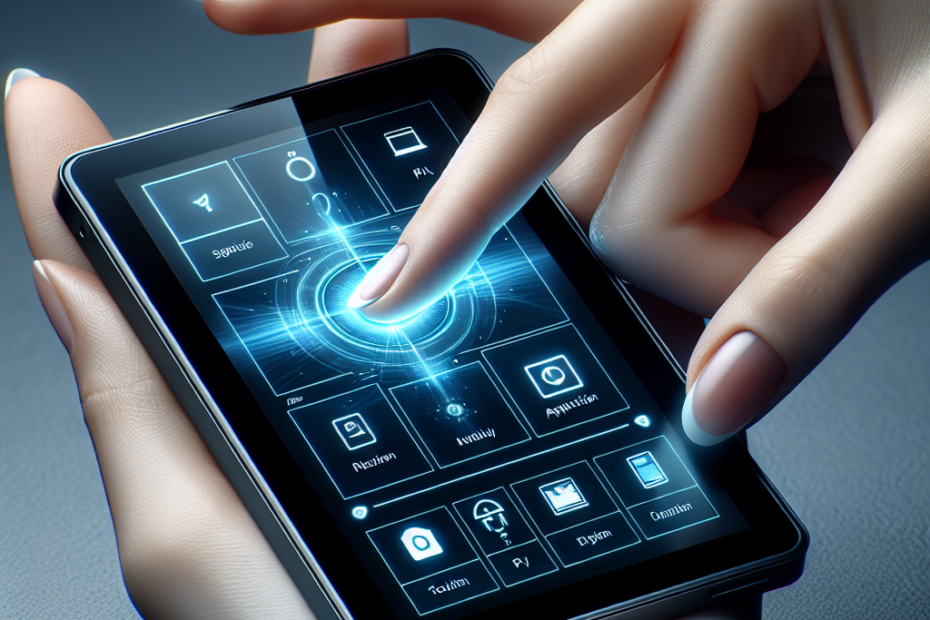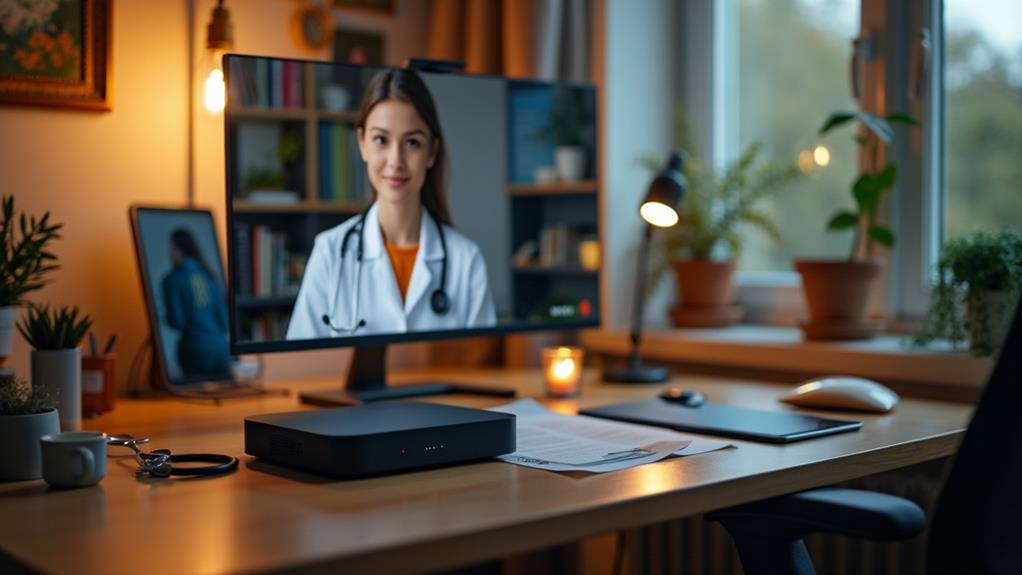



Have you ever wondered if mini PCs can support touch screens? Well, look no further because this article is here to provide you with all the information you need. Mini PCs are compact and versatile devices that have gained popularity for their portable and space-saving features. But can these small powerhouses also incorporate touch screen functionality? Let’s explore the possibilities and find out if mini PCs can truly support touch screens.
Understanding the Mini PC
Definition of a mini PC
A mini PC is a small form factor computer that is designed to offer similar functionality to a traditional desktop or laptop computer, but in a much smaller and more compact package. These devices are typically smaller than a regular computer tower, and some models are even small enough to fit in the palm of your hand. Despite their small size, mini PCs are capable of performing a wide range of tasks, including web browsing, media streaming, document editing, and even light gaming.
Components and structure of a mini PC
A mini PC consists of several key components that work together to provide its functionality. At its core, a mini PC is powered by a motherboard, which houses the CPU, GPU, memory, and other essential hardware components. Additionally, it typically includes storage options such as solid-state drives (SSDs) or hard disk drives (HDDs) for data storage. To connect external devices, mini PCs come equipped with various ports such as USB, HDMI, and audio jacks. They also feature built-in connectivity options like Wi-Fi and Bluetooth for wireless communication.
Common uses and advantages of mini PCs
Mini PCs offer several advantages over traditional desktops and laptops. Firstly, their small size makes them highly portable and easily transportable, making them ideal for users who frequently travel or have limited workspace. They consume less power compared to larger computers, making them energy-efficient and helping to reduce electricity costs. Another benefit is their versatility – mini PCs can serve as media centers, home entertainment systems, or even be used in specialized applications such as digital signage or kiosks. They are also cost-effective alternatives for those who do not require heavy computing power and do not want to invest in a full-sized desktop or laptop.
Exploring Touch Screens
Definition and workings of a touch screen
A touch screen is a display screen that can detect and respond to touch inputs from the user. Instead of relying solely on a keyboard or mouse, users can interact directly with the screen by tapping, swiping, or zooming gestures using their fingers or a stylus. Touch screens utilize various technologies to enable touch recognition, such as resistive, capacitive, or infrared. When a user touches the screen, sensors located in the display detect the touch and convert it into a corresponding action or command, allowing for intuitive and direct manipulation of digital content.
Varieties of touch screens
There are different types of touch screens available, each with its own characteristics and suitability for different applications. Resistive touch screens are composed of multiple layers that press against each other when touched, resulting in activation. Capacitive touch screens, on the other hand, rely on the electrical properties of the human body’s conductivity to detect touch. They can differentiate between light touches and gestures, providing a more responsive and accurate user experience. Infrared touch screens use an array of infrared light-emitting diodes and sensors to detect touch through interruption of beams, making them durable and widely used in high-traffic environments.
Applications and benefits of touch screens
Touch screens have found their way into numerous industries and applications. In the consumer electronics sector, they are commonly used in smartphones, tablets, and portable devices. Touch screens also serve as interactive displays in retail environments, allowing customers to browse, select, and purchase products with ease. In the healthcare industry, touch screens are utilized for medical equipment and patient monitoring, simplifying data entry and enhancing usability. In addition to convenience and ease of use, touch screens can enhance accessibility for individuals with physical limitations, providing a more inclusive user experience.
Components Needed for a Touch Screen Support
Role of the operating system
The operating system (OS) plays a crucial role in enabling touch screen support on a mini PC. The OS needs to have built-in support for touch input, including recognizing gestural commands and providing appropriate responses. Additionally, the OS needs to offer a user-friendly interface designed for touch interaction and support touch gestures like pinch-to-zoom, swipe, and tap. The availability of touch support within the OS fundamentally determines the mini PC’s ability to effectively utilize touch screens.
Hardware requirements
To support touch screens, mini PCs require specific hardware components. The most critical component is the touch screen itself, which must be compatible with the mini PC’s display and connected via the appropriate interface. The mini PC’s motherboard or integrated graphics card must also support touch screen functionality, as they need to communicate with the touch screen for input recognition. Additionally, the mini PC should have sufficient processing power and memory to handle touch input and execute commands promptly.
Software requirements
In addition to the operating system, certain software requirements are necessary for touch screen support on mini PCs. Touch screen drivers, which act as middleware between the touch screen hardware and the operating system, are essential for accurate touch detection and proper communication. These drivers are typically provided by the touch screen manufacturer or the mini PC’s manufacturer. Without the appropriate software drivers installed, the touch screen may not function correctly, or some features may be unavailable.
Do Mini PCs Support Touch Screens?
Dependence on the operating system and hardware
Whether a mini PC supports touch screens depends on a combination of factors, including the operating system and the hardware components. While most modern mini PCs are designed to support touch screens, older or lower-end models may lack the necessary hardware capabilities or outdated operating systems that do not include touch support. It is essential to carefully check the specifications and features of a mini PC to ensure it is compatible with touch screen technology.
Capability of most modern mini PCs to support touch screens
Fortunately, the majority of modern mini PCs are equipped to support touch screens. With advancements in technology, manufacturers have developed mini PCs that include the necessary hardware, such as integrated touch-compatible displays or appropriate ports for connecting external touch screens. Additionally, operating systems like Windows 10 have built-in touch support, allowing users to take full advantage of touch screen functionality without the need for additional software or drivers.
Limitations and exceptions
Although most modern mini PCs are capable of supporting touch screens, there may be some limitations and exceptions to consider. For example, certain mini PCs may only support specific types of touch screens, such as capacitive touch screens, while others may have limitations on the number of touch points they can detect simultaneously. Additionally, some mini PCs may not come pre-installed with touch screen drivers, requiring users to manually download and install them to enable touch functionality. It is crucial to research and verify the compatibility of a specific mini PC model before purchasing it for touch screen use.
How to Enable Touch Support on Mini PCs
Checking compatibility with touch screens
Before attempting to enable touch support on a mini PC, it is necessary to ensure the device is compatible with touch screens. Check the mini PC’s specifications and look for information regarding touch screen support. This information can usually be found on the manufacturer’s website or in the product documentation. If the mini PC does not explicitly mention touch screen support, it may not be compatible, and alternative options should be considered.
Installing necessary drivers
If the mini PC is compatible with touch screens but does not have touch functionality enabled out of the box, it may require the installation of touch screen drivers. These drivers can usually be obtained from the mini PC manufacturer’s website or the touch screen manufacturer’s website. Download the appropriate drivers for the specific mini PC model and operating system, and follow the installation instructions provided. After successfully installing the touch screen drivers, the touch functionality should become active.
Adjusting settings on the operating system
Once the touch screen drivers are installed, it may be necessary to adjust settings on the operating system to enable touch support. In the case of Windows 10, for example, open the “Settings” menu and navigate to the “Devices” section. From there, select “Touchpad & touchscreen” and ensure that the toggle switch for “Touchscreen” is turned on. This will activate touch functionality on the mini PC. Depending on the operating system, the steps to enable touch support may vary, so it is recommended to consult the operating system’s documentation or online resources for specific instructions.
Issues with Touch Screens on Mini PCs
Common problems and troubleshooting
While touch screens on mini PCs generally work well, some issues may arise that require troubleshooting. Common problems include touch input not registering correctly, calibration issues, or the touch screen becoming unresponsive. In these cases, it is advisable to first ensure that the touch screen drivers are correctly installed and up to date. If issues persist, calibrating the touch screen or performing a system restart may resolve the problem. For more complex issues, contacting the mini PC or touch screen manufacturer’s support team can provide further assistance.
Why some mini PCs may not support touch screens
There can be multiple reasons why certain mini PCs do not support touch screens. Older or lower-end models may lack the necessary hardware components, such as touch-compatible displays or appropriate touch screen connectors. Additionally, some mini PCs may use operating systems that do not have built-in touch support. Touch screen functionality also adds an additional cost to the manufacturing process, so it is possible that some mini PCs omit touch screen support to keep prices lower for budget-conscious consumers.
Solutions and workarounds for issues
If a specific mini PC does not support touch screens or is experiencing issues with touch functionality, there may still be solutions or workarounds available. One option is to connect an external touch screen monitor to the mini PC, assuming it has the necessary ports and compatibility. Another workaround is to utilize touch-enabled peripheral devices, such as touchpads or stylus pens, which can provide similar touch functionality without relying on the mini PC’s built-in touch screen. Additionally, ensuring the mini PC’s operating system and touch screen drivers are up to date can resolve compatibility issues and improve touch performance.
Comparing Mini PCs that Support Touch Screens
Popular models that support touch screens
Several popular mini PC models are available in the market today that include built-in touch screen support. These models come with various specifications and features, catering to different user needs and preferences. Examples of popular mini PCs that support touch screens include the Intel NUC (Next Unit of Computing) series, ASUS VivoMini, HP ProDesk Mini, and Lenovo ThinkCentre.
Their features and specifications
The specific features and specifications of mini PCs that support touch screens vary depending on the manufacturer and model. Some common features found in these mini PCs include touch-enabled displays, powerful processors (such as Intel Core i5 or i7), ample storage capacity (with options for SSDs or HDDs), and various connectivity options (such as USB 3.0, HDMI, and Bluetooth). Some models may also include additional features like built-in speakers, VESA mount compatibility, or support for multiple monitors.
Pros and cons of each model
Each mini PC model that supports touch screens has its own set of pros and cons. The Intel NUC offers compact size and powerful performance, making it a great choice for those who prioritize portability and processing power. On the other hand, the ASUS VivoMini emphasizes multimedia capabilities and rich connectivity options, making it suitable for home entertainment setups. The HP ProDesk Mini focuses on business-oriented features like security and manageability, while the Lenovo ThinkCentre offers a balance between performance and affordability. It is important to consider individual requirements and preferences when selecting a mini PC that supports touch screens.
The Role of Software in Supporting Touch Screens
Impact of operating system on touch support
The operating system plays a significant role in providing touch support on mini PCs. Touch-enabled operating systems, such as Windows 10, have built-in features and user interfaces specifically designed for touch input. These operating systems recognize touch gestures and offer touch-specific functionalities, making the overall touch experience seamless and intuitive. The availability of touch support within the operating system ensures that touch screens on mini PCs can be fully utilized and provide a user-friendly interface.
Influence of software drivers
Software drivers bridge the gap between the touch screen hardware and the operating system, allowing for proper communication and touch input recognition. Well-designed touch screen drivers ensure accurate touch detection, responsiveness, and compatibility with the operating system’s touch functionalities. Manufacturers regularly update drivers to improve performance, add new features, and address potential issues. Keeping the touch screen drivers up to date is essential for maximizing touch screen functionality and ensuring a smooth user experience on mini PCs.
How application software can leverage touch screen functionality
Application software can leverage touch screen functionality in various ways, depending on the specific application and its design. Touch-friendly applications can provide touch-specific controls and interfaces, making it easier to navigate through menus, interact with content, or perform actions using touch gestures. For example, photo editing software may have touch-supported features like zooming or rotating images with pinch-to-zoom gestures. Similarly, drawing applications can utilize touch pressure sensitivity to create natural and precise brush strokes. Application developers can harness the potential of touch screens to enhance the usability and interactivity of their software on mini PCs.
Uses of Touch Screens with Mini PCs
Scenarios where a touch screen can benefit a mini PC user
A touch screen can benefit mini PC users in various scenarios. Users who value convenience and simplicity can take advantage of touch screens to quickly navigate through menus, launch applications, or browse the web with natural touch gestures. Artists or designers can utilize touch screens for precise and intuitive drawing or sketching, especially when combined with compatible stylus pens. In interactive kiosk environments, touch screens can enable seamless user interaction, allowing customers to easily navigate through options or input information without the need for peripheral input devices.
Professional uses of touch screens with mini PCs
In professional settings, touch screens can offer unique advantages for mini PC users. Professionals working in fields such as graphic design, architecture, or engineering can benefit from touch screen-enabled applications and software, allowing them to interact directly with their digital projects and make precise adjustments with ease. Touch screens also find utility in educational environments, enhancing interactive learning experiences by allowing students to manipulate on-screen content and participate in engaging activities.
Entertainment and personal uses of touch screens with mini PCs
Touch screens on mini PCs provide a range of entertainment and personal uses. They can turn a mini PC into a multimedia hub, allowing users to navigate media libraries, play games, and control media playback with touch gestures. Touch screens offer a more immersive and interactive experience for watching movies or videos, enabling users to swipe or pinch-to-zoom content on the screen directly. Additionally, touch screens can facilitate easy web browsing, social media interaction, and online communication, making them highly suitable for personal use.
Future of Touch Screens and Mini PCs
Trends in touch screen technology
Touch screen technology is continually evolving, driven by advancements in research and development. One notable trend is the increasing adoption of multitouch screens that can recognize and track multiple touch inputs simultaneously, enabling more complex gestures and interactions. Another trend is the integration of touch screens with flexible or curved displays, allowing for unique form factors and improved ergonomics. Additionally, manufacturers are exploring new touch technologies, such as haptic feedback and pressure-sensitive displays, to provide enhanced tactile experiences and further bridge the gap between physical and digital interactions.
Increasing support for touch screens on mini PCs
As touch screen technology becomes more widespread and affordable, the support for touch screens on mini PCs is expected to increase. Manufacturers recognize the demand for touch-enabled devices and are incorporating touch screen functionality into their mini PC offerings. This allows users to enjoy the benefits of touch interaction in a compact and portable form factor. Increased support for touch screens on mini PCs also aligns with the trend of converging technologies, as users expect seamless touch experiences across different devices, including smartphones, tablets, and mini PCs.
Potential for future developments and improvements
The future holds promising developments and improvements for touch screens on mini PCs. Advancements in touch screen technology may lead to thinner and more responsive displays, offering an improved user experience. Further integration of touch functionality directly into the mini PC’s hardware, such as the motherboard or graphics card, could enhance compatibility, performance, and reliability. Additionally, software advancements may bring new touch-specific features and applications tailored to the needs of mini PC users, further expanding the possibilities for touch screen usage. As touch screens continue to evolve, they will likely become an even more integral part of mini PC usage, offering enhanced versatility and interaction capabilities.
Disclosure: As an Amazon Associate, I earn from qualifying purchases.








